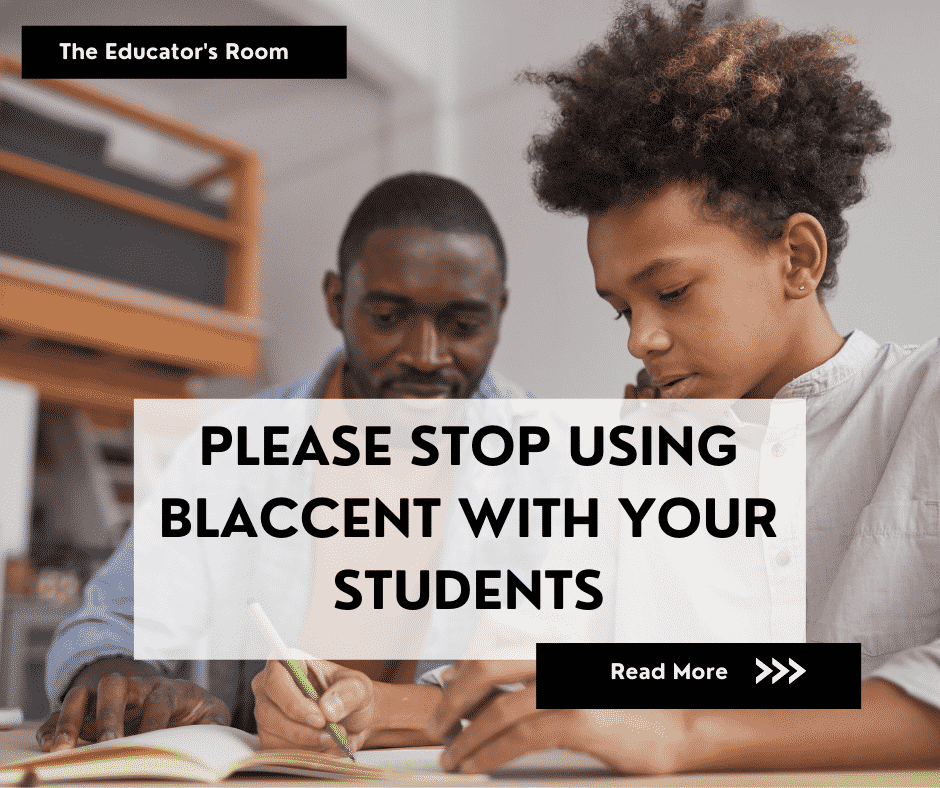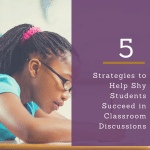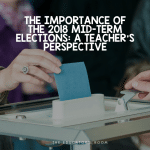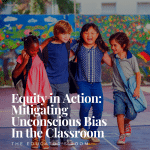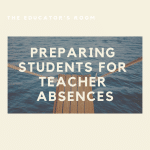Probably one of the most dehumanizing aspects of my educational journey as both a student and an educator is the “blaccent” that non-Black educators use when addressing Black people. According to Dictionary.com, a “blaccent” is “the imitation of Black English by non-black people.” It’s an offensive mockery of Black culture. To my non-Black educators, stop doing it.
As I write this piece, I recall a moment from my youth. I was in high school, and the only Black student in my class which earned me the nickname, “Token.” I needed a partner for gym class, but when I didn’t find one my physical education teacher screamed from across the room, “Hey Lanee, girlfriend! Come be my partner.” I didn’t think that it was possible to be further alienated from the rest of the class, but this teacher proved me wrong. I was humiliated– not at being unable to find a partner, I was used to that– by their need to address me using a blaccent in front of my peers.
At that moment, I wished I could just disappear. In my years as an educator, I’ve seen the same emotions stirred in my Black students when they told things that non-Black teachers have said to them or when I’ve witnessed it myself.
It’s Not Cool. It’s Racist.
I remember when a colleague said to me, “Give me five on the Black hand side!” When I said “Excuse me?” and looked at them with disgust, they immediately started justifying the reason they are “allowed” to say that to me. I walked away leaving them hanging.
It’s obvious that “blackface” is racist, but putting on a blaccent to address your Black students and colleagues is doing the same thing verbally. It’s making a caricature of Black culture. Instead of genuinely making a connection with your students and colleagues, you’re making an assumption about who they are. Black people are not a monolith. We don’t all speak, think, or act the same. We are human beings, but speaking in a blaccent reduces us to less than. Let me say this clearly: It doesn’t make you cool, hip, or fun. It’s harmful, it’s degrading, and it’s racist.
The Purpose of Language
Language incorporates so much of who we are. In my classroom, I loved exploring language with my students. In my first year of teaching, we read “Mother Tongue” by Amy Tan and watched Jamila Lyiscott’s performance of “3 Ways to Speak English.” We had a Socratic Seminar on code-switching, and students developed lists of all the different types of “Englishes” they speak. I remember one student wrote down, “Telephone English.” When I inquired what that was, he wonderfully demonstrated how the way he speaks changes when answers the phone by taking a pretend phone call.
These activities led to a culminating project of creating a “Teenage Slang Dictionary.” But it wasn’t just slang. It was regionalisms, internet terms, and more. My students took the lead as they worked together to compile dictionary entries. They used each other as references to check spellings, definitions, parts of speech, and examples. They even told me that it would need to be updated because language changes as things become old.
When I moved to Baltimore, I did the same project in a different way. I started the lesson off by posting a picture of a “chicken box.” I asked my students, “What’s this?” They told me that obviously, it was a chicken box. And I watched the shock on their faces when I said that I didn’t know what a chicken box was until I moved to Baltimore. They couldn’t contain their laughter when I said that I call it a “chicken platter.” We read and discussed “Hold up, ‘Hon’: Baltimore’s black vernacular youthful, dynamic if less recognized than ‘Bawlmerese’.” We watched videos on how Marylanders and teenagers speak and discussed if they believed that these were accurate or outdated.
When it became time to put together the dictionaries, a student approached me and said, “But Ms. Higgins I’m not from Baltimore. I can’t add anything.” I asked him if there were regionalisms or words used where he is from that isn’t used here. I asked him to consider how the internet has changed the language and think about apps like Instagram that did not exist in the prior decade. His face lit up, and he knew exactly what he was going to do. In the construction of the dictionaries, the students were the experts. They brought their knowledge and experiences into the project. Each of their dictionary entries shared a piece of who they are.
I share these examples to say that there are genuine ways to use language to connect with others. Language is who we are. The purpose of language is to be understood. If you use a blaccent with your Black students, then you are purposely misunderstanding your students.

